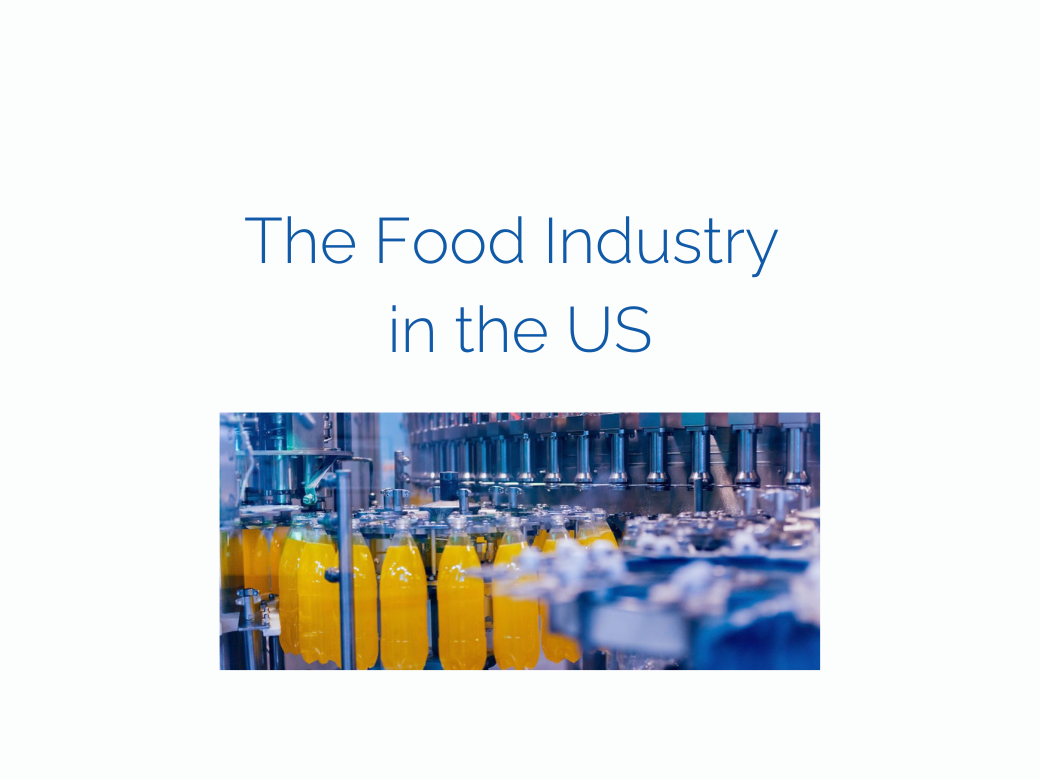
Explore the US food industry's growth, key trends, and challenges. Learn how innovation and sustainability shape this vital sector.
The food industry in the United States is one of the largest and most dynamic sectors in the global economy. From farm to table, this industry encompasses production, processing, distribution, and retail, playing a crucial role in both the national economy and everyday life. In this article, we’ll explore the current state of the US food industry, its key trends, challenges, and future opportunities.
1. Overview of the US Food Industry
The food industry in the US is a multi-trillion-dollar sector, contributing significantly to employment and GDP. It includes:
-
Agriculture & Farming – The foundation of food production.
-
Food Processing & Manufacturing – Transforming raw ingredients into consumable products.
-
Distribution & Logistics – Ensuring efficient supply chains.
-
Retail & Food Service – Supermarkets, restaurants, and delivery services.
The US is a global leader in food exports, supplying grains, meat, dairy, and processed foods worldwide.
2. Key Trends Shaping the US Food Industry
2.1. Rising Demand for Organic and Healthy Foods
Consumers are increasingly opting for organic, non-GMO, and plant-based foods. Health consciousness and sustainability concerns drive this shift, with brands like Beyond Meat and Impossible Foods gaining popularity.
2.2. Technological Advancements in Food Production
From automation in manufacturing to AI-driven supply chains, technology is revolutionizing efficiency. Vertical farming and lab-grown meat are also emerging as sustainable alternatives.
2.3. Growth of E-Commerce and Food Delivery
Online grocery shopping and meal delivery services (e.g., Instacart, DoorDash) have surged, especially post-pandemic. Companies are investing in last-mile delivery solutions to meet demand.
2.4. Sustainability and Ethical Sourcing
Consumers and regulators demand eco-friendly packaging, reduced food waste, and fair-trade practices. Companies like Nestlé and PepsiCo are committing to carbon-neutral goals.
3. Challenges Facing the US Food Industry
3.1. Supply Chain Disruptions
The pandemic exposed vulnerabilities in global supply chains, leading to shortages and price volatility. Companies are now focusing on local sourcing and resilient logistics.
3.2. Regulatory and Safety Compliance
Strict FDA and USDA regulations require constant adaptation. Food recalls and safety scandals can damage reputations, making compliance critical.
3.3. Labor Shortages
From farmworkers to truck drivers, labor shortages impact production and distribution. Automation helps, but skilled labor remains essential.
3.4. Rising Production Costs
Inflation, energy prices, and raw material costs squeeze profit margins. Businesses must optimize operations to stay competitive.
4. Future Opportunities in the US Food Industry
4.1. Expansion of Plant-Based and Alternative Proteins
The plant-based food market is projected to grow exponentially. Investing in R&D for cultured meat and protein alternatives presents a major opportunity.
4.2. Personalized Nutrition
Advances in AI and biotechnology allow customized diets based on genetics and health data. Startups like Nutrino and Habit are leading this trend.
4.3. Smart Packaging and Food Traceability
Blockchain and IoT enable real-time tracking of food origins, enhancing transparency and reducing fraud.
4.4. Expansion into Emerging Markets
With rising global demand, US food exporters can tap into Asia, Africa, and Latin America, where middle-class growth drives consumption.
5. How Businesses Can Thrive in the US Food Industry
-
Leverage data analytics to predict consumer trends.
-
Adopt sustainable practices to meet regulatory and consumer expectations.
-
Invest in automation to reduce labor dependency.
-
Enhance digital presence with e-commerce and social media marketing.
Ready to optimize your food business strategy?
Schedule a Consultation with Our Experts. |
Conclusion
The food industry in the US is evolving rapidly, driven by technology, sustainability, and shifting consumer preferences. While challenges like supply chain disruptions and labor shortages persist, innovative solutions and strategic adaptations offer immense growth potential.
Want to stay ahead in the competitive food market? Subscribe to our newsletter for the latest industry insights!